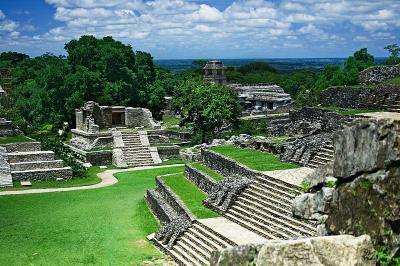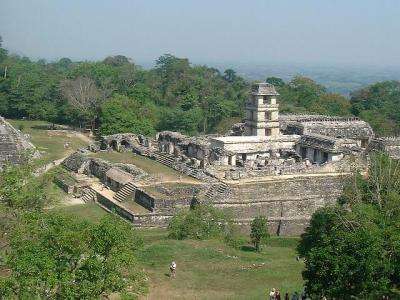December 21, 2010 report
Mayan buildings may have operated as sound projectors

(�鶹��ԺOrg.com) -- A team of archaeologists from Mexico say buildings built by the Maya people could have served as projection systems and amplifiers to deliver sounds over relatively large distances.
The research team, led by archaeologist Francisca Zalaquett from the Universidad Nacional Autónoma de México, discovered that the temples and public squares in the Mayan city of Palenque, near Ciudad del Carmen in southern Mexico, could clearly project the sounds of a human speaker and musical instruments of the time -- around 600 AD -- across at least a hundred meters, or around the length of a football field.
The research included an archaeoacoustic analysis of public rituals in the plazas of the areas, studying in detail the frequencies produced by musical instruments of the time, white and pink sound emanations, and their reverberations in the plazas.
Zalaquett suggested the buildings would have acted as amplifiers, and their stucco coatings may have been applied specifically to improve the acoustics. Measurements at buildings where some stucco remains suggest it altered the reflection and absorption of the sounds, since this was also demonstrated in the laboratory.
The investigation identified rooms that could have been used by musicians, speakers or priests, since the frequency, quality and volume of sound produced by a speaker or musician standing in these rooms increased, causing a “horn” effect and allowing the music or the message to travel further and reach more people. Zalaquett and colleagues also identified areas on the plazas where the spectators would best be able to see and hear the performers.

The Maya used a variety of musical instruments, including whistles, natural materials such as turtle shells played with antlers, gourds filled with stones or seeds, seashells, and ocarinas. The instruments were probably used in public ceremonies honoring deities or celebrating noble births and war victories, and the music and chanting or speech would have been broadcast throughout the public squares.
The findings strongly suggest the design and structures at Palenque involved a great deal of knowledge about acoustics and the behavior of sound. They were presented by Zalaquett at a recent meeting of the Acoustical Society of America in Cancún, Mexico.
More information: via
© 2010 �鶹��ԺOrg.com
















